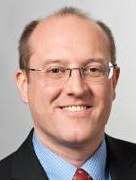This talk entitled “Coding for Cloud-RAN Downlink Channels” will be presented by Prof. Dr. sc. techn. Gerhard Kramer. It will on the 12th of december. The place and the time are to be defined.
Abstract:
The downlink of a cloud radio access network (C-RAN) architecture can be modeled as a diamond network. The baseband unit (BBU) is connected to remote radio heads (RRHs) via fiber links that are modeled as rate-limited bit pipes. Bounds on the rates for reliable communication are evaluated for single-antenna RRHs. A lower bound is based on Marton’s coding, which facilitates dependence across the RRH signals. An upper bound uses Ozarow’s technique to augment the system with an auxiliary random variable. The bounds are studied over scalar Gaussian C-RANs and are shown to meet and characterize the capacity for interesting regimes of operation. The bounds are also evaluated for an abstract model: a noise-free binary adder channel (BAC). The capacity of the BAC is established for all ranges of bit-pipe capacities, which seems to yield a new combinatorial result on sum sets.
Biography:
Gerhard Kramer is Alexander von Humboldt Professor and Chair of Communications Engineering at the Technical University of Munich (TUM). He received the B.Sc. and M.Sc. degrees in electrical engineering from the University of Manitoba, Canada, in 1991 and 1992, respectively, and the Dr. sc. techn. degree from the ETH Zurich, Switzerland, in 1998. From 1998 to 2000, he was with Endora Tech AG in Basel, Switzerland, and from 2000 to 2008 he was with the Math Center at Bell Labs in Murray Hill, NJ. He joined the University of Southern California (USC), Los Angeles, CA, as a Professor of Electrical Engineering in 2009. He joined TUM in 2010.
Gerhard Kramer’s research interests are primarily in information theory and communications theory, with applications to wireless, copper, and optical fiber networks.

